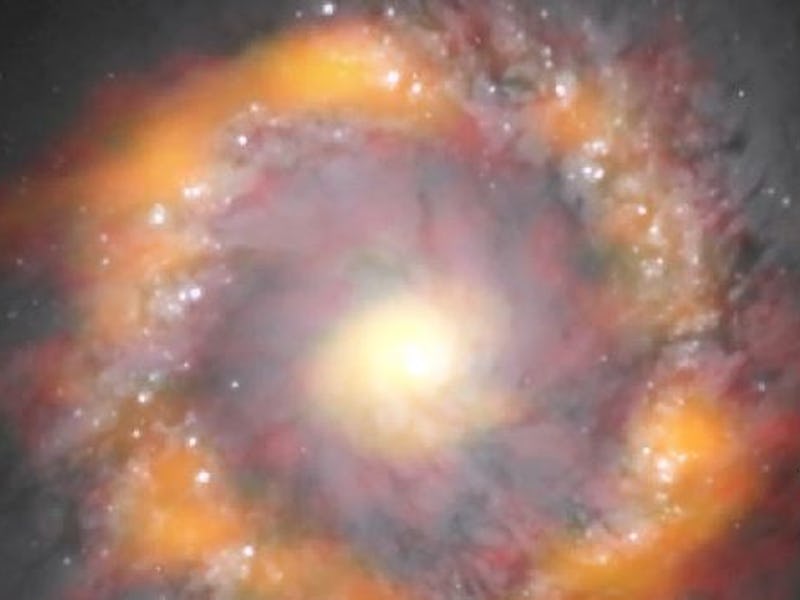Astronomers Weigh a Black Hole in a Galaxy Far, Far Away
Big surprise, it's surprisingly big.

For the first time, astrophysicists used the Atacama Large Millimeter/submillimeter Array (ALMA) to determine the mass of a spiral black hole. The black hole sits at the center of galaxy 45 million light-years away — which, like a district in some dismal corner of Maine, only has a numbered designation, NGC 1097. And it’s Brobdingnagian, 140 million times the mass of our sun. How to size up all that heft?
There are a few ways to measure a black hole: You can infer its size from characteristics like galaxy size or something called “bulge luminosity,” or you can more directly calculate the mass based on the acceleration with which gas and stars spin around the hole. It was thanks to latter method — measuring the kinematics of gas molecules around this black hole, as they recently reported in The Astrophysical Journal — that the astronomers could estimate the mass of the spiral NGC 1097.
To make the unfathomable just a smidgen more fathomable, astronomers like to compare the weight of black holes to the weight of our sun. (Not that our human brains can really comprehend the size of Sun, either — Sol is 333,000 times more massive than Earth, equivalent to 2.8414286e+26 bull elephants, which is a pachyderm for every atom in the human body, give or take a factor of 10.)
How does the black hole at the center of our own galaxy stack up to NGC 1097? Ours weighs in at just 45 million suns. Way to be the 98-pound weakling of space, Milky Way.